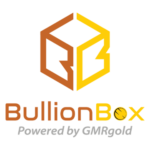On May 17, 2024, silver prices surged past the significant $30 per ounce mark, capturing the attention of investors and analysts worldwide. This milestone highlights silver’s growing appeal in an uncertain economic landscape. In this article, we will explore the factors driving silver’s recent rise, compare the trends in silver and gold in 2024, examine silver’s historical highs, and delve into its reputation as “the poor man’s gold.”The Rise to $30 Per OunceKey Drivers Behind the SurgeSeveral factors have contributed to silver’s ascent to over $30 per ounce:Inflationary Pressures: Persistent inflation continues to be a primary driver of precious metal prices. As central banks, particularly the Federal Reserve, grapple with high inflation, investors are turning to assets that can preserve value. Silver, like gold, is viewed as a hedge against inflation, attracting significant investment interest.Industrial Demand: Silver’s extensive industrial applications set it apart from other precious metals. It is a critical component in electronics, solar energy, and electric vehicles (EVs). The push for green technologies and renewable energy sources has significantly increased the demand for silver, especially for photovoltaic cells in solar panels.Monetary Policy and Interest Rates: Speculation about potential rate cuts by the Federal Reserve has impacted the value of the US dollar, which is often inversely related to silver prices. Lower interest rates can decrease the opportunity cost of holding non-yielding assets like silver, making them more attractive.Geopolitical Uncertainty: Ongoing geopolitical tensions and global economic uncertainties have driven investors towards safe-haven assets. Silver, like gold, benefits from these inflows as investors seek to mitigate risks associated with market volatility and geopolitical instability.Economic ContextThe broader economic context of 2024 has been marked by slow but steady recovery from the disruptions caused by the COVID-19 pandemic, alongside new challenges such as geopolitical conflicts and supply chain issues. These factors have contributed to a climate of uncertainty, encouraging investment in stable and reliable assets like silver.Comparing Silver and Gold Trends in 2024Gold’s PerformanceGold has also experienced significant movements in 2024, with prices nearing $2,400 per ounce. The factors influencing gold are similar to those affecting silver: high inflation, potential shifts in monetary policy, and geopolitical instability. However, there are distinct differences in how these two metals are perceived and utilized:Perception and Use: Gold is primarily viewed as a store of value and a hedge against inflation and currency devaluation. Its industrial uses are limited compared to silver, which has a dual role as both an investment asset and an industrial commodity.Market Drivers: While both metals benefit from safe-haven demand, silver’s price is more sensitive to industrial demand fluctuations. The ongoing growth in renewable energy and technology sectors has a more pronounced impact on silver prices.Volatility: Historically, silver prices have been more volatile than gold. This is partly due to the smaller market size and the greater impact of industrial demand on silver.Recent TrendsIn 2024, both metals have seen upward trends, but silver’s rise to over $30 per ounce highlights a particularly strong performance driven by its industrial demand. Gold’s steady climb towards $2,400 per ounce reflects its enduring appeal as a hedge against economic uncertainty and inflation.Historical Highs of SilverPast PeaksSilver has experienced several notable peaks throughout history:1980 Spike: In January 1980, silver prices skyrocketed to an all-time high of $49.45 per ounce. This surge was driven by the Hunt brothers’ attempt to corner the silver market, which led to a dramatic increase in prices followed by an equally dramatic crash.2011 High: In April 2011, silver prices again approached the $50 mark, reaching approximately $49.50 per ounce. This rise was fueled by strong investment demand in the wake of the global financial crisis, coupled with inflation fears and economic uncertainty.Comparison to Current TrendsThe current rise in silver prices, surpassing $30 per ounce, is significant but still below the historical highs seen in 1980 and 2011. However, the factors driving today’s prices are more sustainable and less speculative than the events leading to past peaks. The growing industrial demand, particularly from the renewable energy sector, suggests a more stable foundation for silver’s value.Silver as the “Poor Man’s Gold”Accessibility and AffordabilitySilver is often referred to as “the poor man’s gold” due to its relative affordability compared to gold. This nickname highlights silver’s accessibility for a broader range of investors:Lower Price Point: Silver’s lower price per ounce makes it more affordable for small investors looking to enter the precious metals market. This accessibility allows individuals with limited capital to invest in physical silver coins, bars, or rounds.Investment Opportunities: Silver offers various investment opportunities, including physical bullion, ETFs, and mining stocks. These options provide flexibility for investors with different risk appetites and investment goals.Volatility and Potential for GainsSilver’s historical volatility offers both risks and opportunities for investors:Higher Volatility: Compared to gold, silver prices tend to be more volatile, which can lead to higher potential returns. This volatility is partly due to silver’s smaller market size and its dual role as an industrial and investment metal.Leverage in Bull Markets: In bull markets, silver often outperforms gold, providing higher percentage gains. This makes silver an attractive option for investors seeking significant returns during periods of rising precious metal prices.Industrial Demand and Long-Term ProspectsSilver’s industrial applications provide a unique aspect to its investment profile:Growing Industrial Use: The increasing demand for silver in technology and renewable energy sectors supports its long-term prospects. Innovations in electronics, solar energy, and electric vehicles are likely to sustain and potentially increase industrial demand for silver.Diversified Demand: Unlike gold, which is primarily driven by investment and jewelry demand, silver benefits from diversified demand sources. This diversification can provide stability and growth opportunities for silver prices.The Future of Silver PricesPotential DriversSeveral potential drivers could influence the future trajectory of silver prices:Technological Advancements: Continued advancements in technology, particularly in renewable energy and electronics, will likely sustain and possibly increase industrial demand for silver. Innovations in battery technology and solar panel efficiency could further drive this demand.Economic Policies: Monetary policies, particularly those related to interest rates and inflation control, will play a crucial role. If central banks opt for rate cuts to stimulate economic growth, the resulting impact on the dollar and inflation could boost silver prices.Geopolitical Stability: Ongoing geopolitical events will continue to influence safe-haven demand for silver. Stability in key regions or resolutions to current conflicts could temper this demand, while new tensions could enhance it.Supply Constraints: Silver production and supply chain dynamics are also critical. Any disruptions in mining operations or changes in regulatory policies could affect the availability of silver, influencing prices.Market SentimentInvestor sentiment will be a significant factor in silver’s future performance. Positive market sentiment towards silver as both an industrial metal and a safe-haven asset can sustain high prices. Conversely, shifts in sentiment towards riskier assets or alternative investments could impact demand for silver.Investment StrategiesDiversificationGiven the current trends and potential future developments, diversification remains a key strategy for investors. Including silver in a diversified portfolio can provide a hedge against inflation and economic uncertainty while also offering exposure to growth in industrial sectors.Timing and VolatilityInvestors should also consider the timing and potential volatility associated with silver. While the recent surge past $30 per ounce is promising, silver’s historical volatility suggests that prices can fluctuate significantly. Careful consideration of market conditions and long-term trends is essential for making informed investment decisions.Physical vs. Paper SilverInvestors have various options for gaining exposure to silver, including physical silver (coins and bars) and paper silver (ETFs and mining stocks). Each option has its advantages and risks:Physical Silver: Offers tangible assets and direct exposure to silver prices but involves storage and security considerations.Silver ETFs: Provide easy access to silver prices without the need for physical storage but come with management fees and counterparty risks.Mining Stocks: Offer potential for higher returns through company performance but are subject to operational risks and market volatility.ConclusionThe rise of silver prices past $30 per ounce on May 17, 2024, marks a significant event in the precious metals market. This surge is driven by a combination of inflationary pressures, robust industrial demand, and global economic uncertainties. Comparisons to gold reveal both metals’ unique characteristics and market drivers, while historical peaks highlight the significance of the current trend.As we look to the future, the trajectory of silver prices will depend on various factors, including technological advancements, economic policies, geopolitical stability, and investor sentiment. For investors, a diversified approach that considers the timing and volatility of silver, along with the choice between physical and paper silver investments, will be crucial for navigating this dynamic market.Silver’s performance in 2024 underscores its dual role as an industrial and investment asset, making it a valuable component of any investment strategy in an increasingly uncertain economic landscape. At the time of this blog’s release silver is at $31.35 an ounce per Kitco.

 with 700+ reviews
with 700+ reviews


